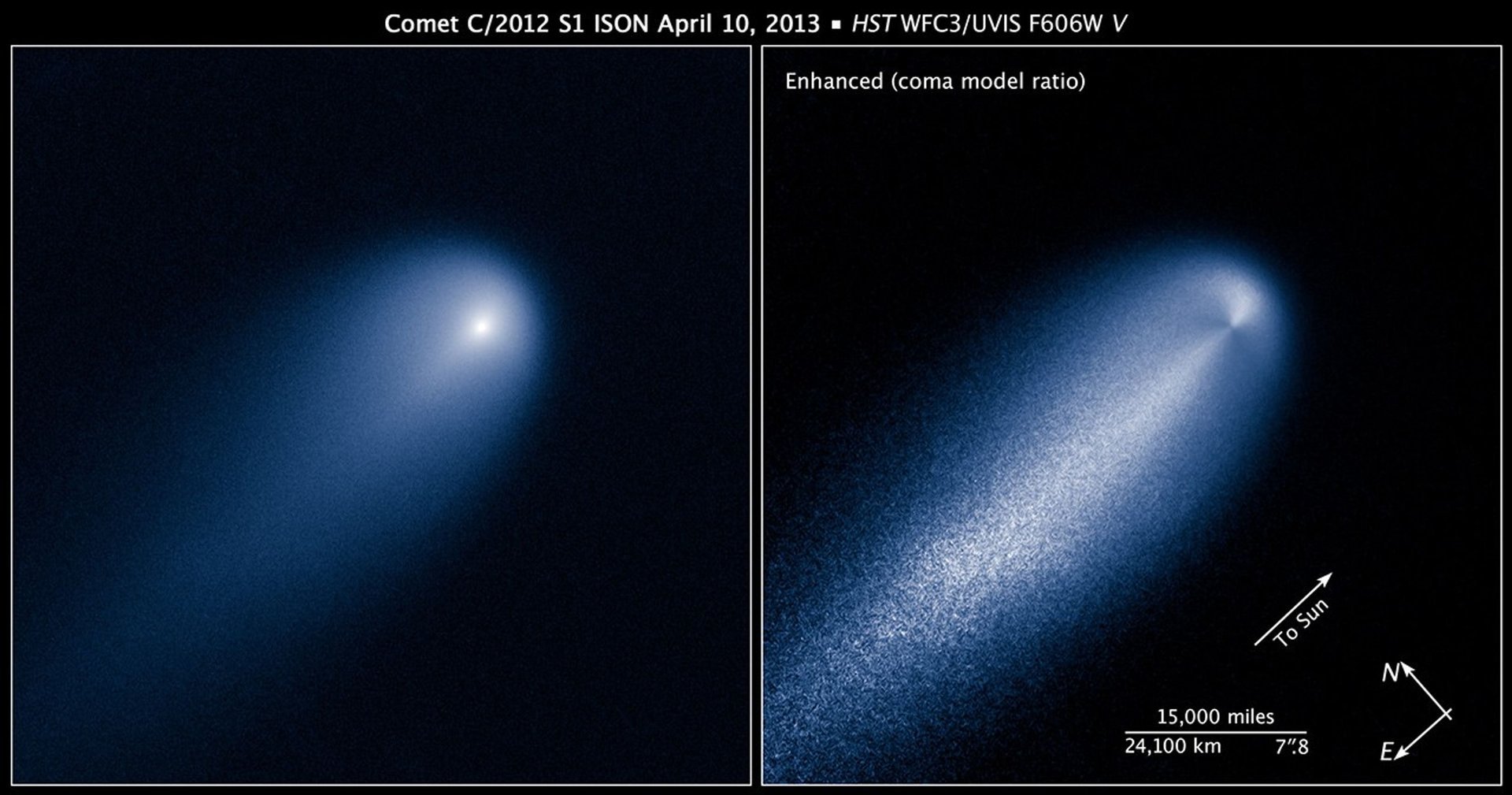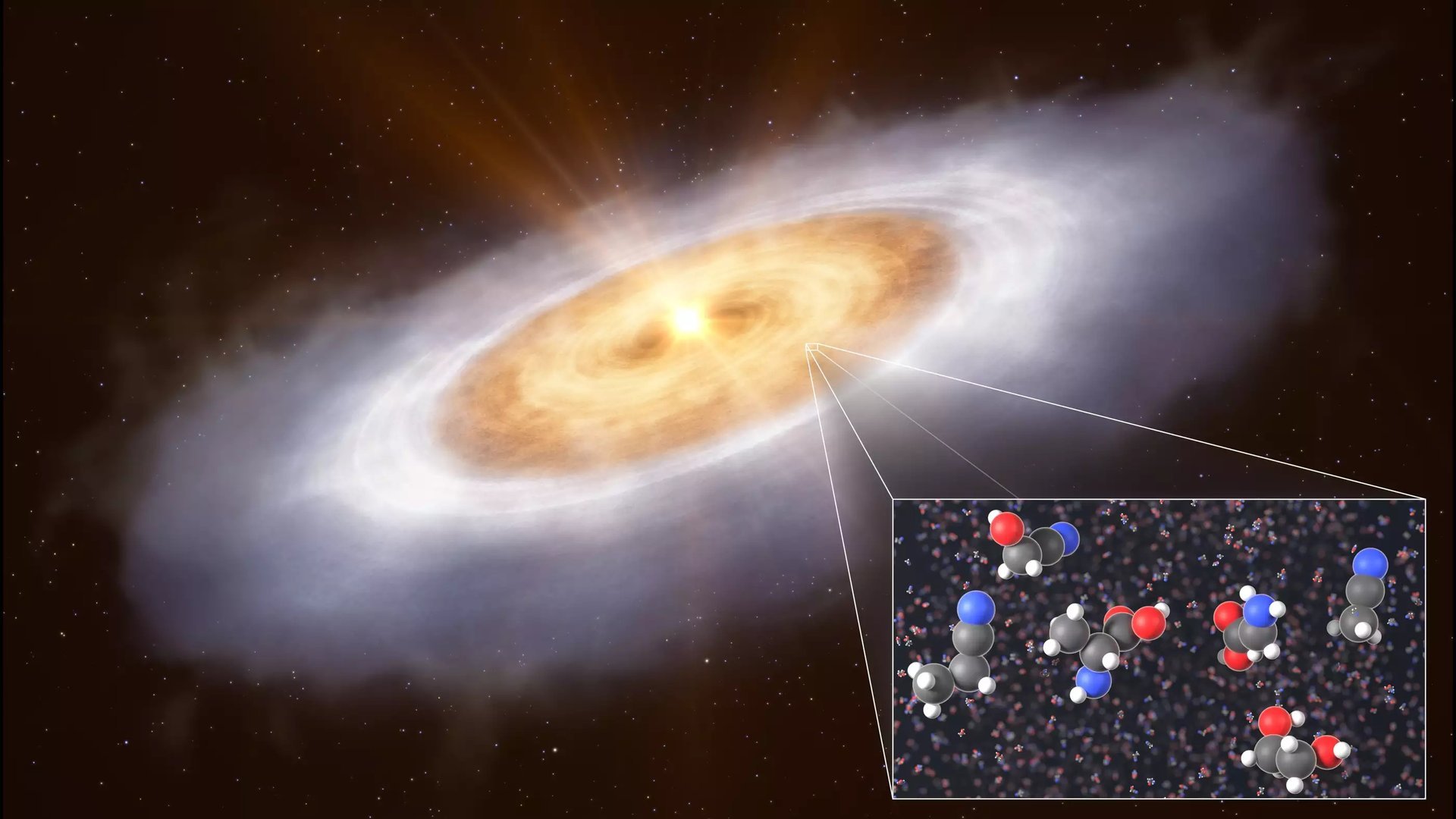Using the Atacama Large Millimeter/submillimeter Array (ALMA), an international team of astronomers announced the detection of 17 complex organic molecules (COMs) in a protoplanetary disk surrounding a distant star. This includes the first tentative detection of ethylene glycol (CH₂OH)₂ and glycolonitrile (HOCH₂CN), which are believed to be building blocks of amino acids and their precursors. While these molecules have been detected in space before, this is the first time scientists have observed them in a planet-forming disk around a protostar, which offers tantalizing clues about the origin of life in the Universe.
The team was led by Abubakar Fadul, a visiting scientist with the Department of Planet and Star Formation at the Max Planck Institute for Astronomy (MPIA). He was joined by fellow MPIA members and researchers from the Harvard & Smithsonian Center for Astrophysics, Columbia University, Purdue University, the University of California Berkeley, and the University of Michigan. The papers that describe their findings recently appeared online, in the Astronomical Journal, and the Astrophysical Journal (respectively).
The organic molecules they identified were found in the disk surrounding V883 Orionis, a protostar located about 1,350 light-years away in the constellation Orion. COMs are molecules with more than five atoms and at least one carbon atom. The detection of glycolonitrile is especially significant since it is a precursor in the amino acids glycine and alanine, and the nucleotide base adenine, one of the four that make up DNA and RNA. The discovery of COMs in the protoplanetary disk of V883 Orionis has helped resolve an enduring puzzle regarding the evolution of organic molecules in star systems.
Artist’s impression of the water snowline around the young star V883 Orionis, as detected with the Atacama Large Millimeter Array (ALMA) in 2016. Credit: A. Angelich (NRAO/AUI/NSF)/ALMA (ESO/NAOJ/NRAO)
The transition of a cold protostar to a young star with a protoplanetary disk is accompanied by a phase characterized by intense shockwaves and radiation that disturb gas and dust in the disk. These violent processes were thought to destroy most complex molecules that would have assembled very early in a system’s history. This led scientists to propose the “reset scenario,” where COMs would have to be recreated in the disks from which a system of planets, asteroids, and comets forms. As Kamber Schwarz, an MPIA scientist and co-author, explained in an MPIA press release:
Now it appears the opposite is true. Our results suggest that protoplanetary discs inherit complex molecules from earlier stages, and the formation of complex molecules can continue during the protoplanetary disk stage.
The main issue with the “reset scenario” is that COMs would not have enough time to form in significant amounts during a star’s transition from the protostellar phase to a young star surrounded by a protoplanetary disk. In contrast, these findings suggest that the conditions that lead to biological processes are present early in solar evolution, rather than being restricted to individual planetary systems later. “Our finding points to a straight line of chemical enrichment and increasing complexity between interstellar clouds and fully evolved planetary systems,” added Abubakar Fadul.
These findings also suggest that the abundance and complexity of COMs increase as protoplanetary disks evolve to become planetary systems, meaning that the building blocks of life are present in star systems from the earliest stages. In previous studies, astronomers identified simple organic molecules (like methanol) in stellar nurseries, the dense clouds of dust and gas that give birth to new stars. Said Tushar Suhasaria, a co-author and the head of MPIA’s Origins of Life Lab, these same nurseries could contain complex compounds like those identified around V883 Orionis:
We recently found ethylene glycol could form by UV irradiation of ethanolamine, a molecule that was recently discovered in space. This finding supports the idea that ethylene glycol could form in those environments, but also in later stages of molecular evolution, where UV irradiation is dominant.
 Comet C/2012 S1 (ISON). Credit: NASA/JPL-Caltech
Comet C/2012 S1 (ISON). Credit: NASA/JPL-Caltech
Meanwhile, amino acids, sugars, and nucleobases (which make up DNA and RNA) have been found in asteroids, meteorites, and comets within the Solar System. Since the chemical reactions that lead to COMs occur under cold conditions, these same molecules surely exist in greater abundances in their interiors. While these cannot be accessed without drilling, comets experience outgassing as they draw closer to the Sun. As they grow warmer from solar heating, comets will form tails (or haloes) of gas and dust, which astronomers can study to identify the spectral signatures of organic molecules.
This process also occurs in the V883 Orionis system, where the star is still accreting gas from the surrounding disk, eventually triggering a fusion reaction in its core. During this period, the gas is heated and releases intense bursts of radiation that are strong enough to heat the surrounding disk, releasing the organic molecules detected by the team. Said Schwartz:
Complex molecules, including ethylene glycol and glycolonitrile, radiate at radio frequencies. ALMA is perfectly suited to detect those signals. While this result is exciting, we still haven’t disentangled all the signatures we found in our spectra. Higher resolution data will confirm the detections of ethylene glycol and glycolonitril, and maybe even reveal more complex chemicals we simply haven’t identified yet.
These findings also present the opportunity for follow-up investigations that look for molecules in other parts of the electromagnetic spectrum. Astronomers could identify even more evolved molecules like amino acids. If this theory is confirmed, it would reveal how the ingredients for life were distributed throughout the early Solar System, which could provide clues as to where else it might be found.
Further Reading: MPG
